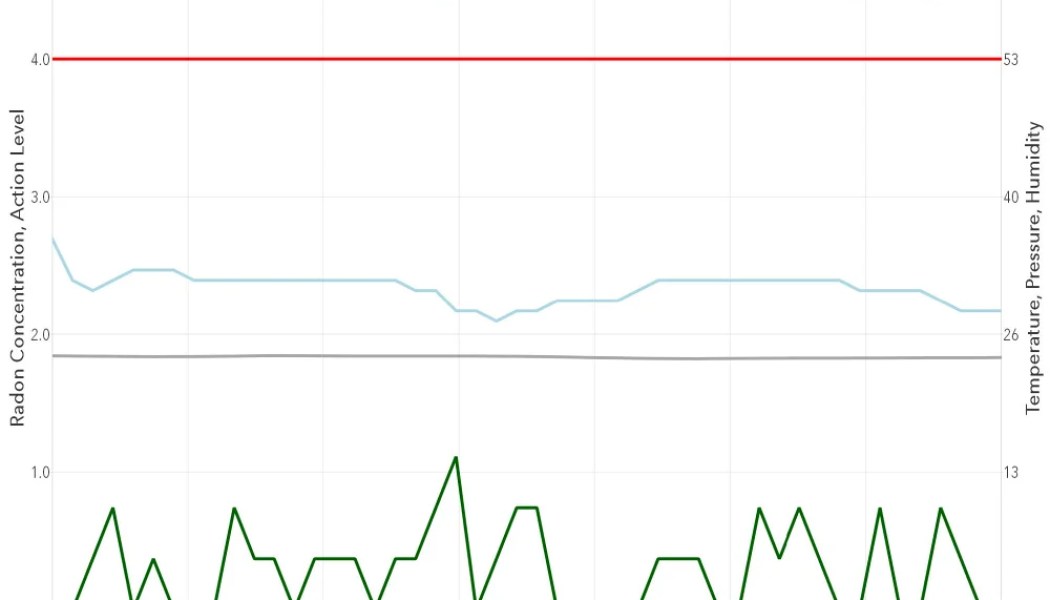As mentioned in other blog posts, the only way to know the Radon level in your home is to conduct a test, preferably by a license professional like Pandion Property Inspections LLC. If your home contains a mitigation system, you shouldn’t assume it is working properly either.
In the United States, Radon is measured in pCi/L, or Picocuries per liter of air. A picocurie equates to one trillionth of a curie, a unit of radioactivity. In other words, this measurement indicates the number of radioactive decay events in one liter of air per second. Although there are no truly safe measurement levels, the EPA action level is 4.0 pCi/L. This means, if test results come back at this level or higher, it is time to take action and begin mitigation.

The graph posted above is from a 72 hour long short-term test conducted by myself in a newly constructed home in Northern Colorado. The red line across the bottom of the graph indicates the EPA action level. The green line in the middle of the graph indicates the radon level at the time each sample was taken. As you can see, the green line seems to jump up and down fairly erratically. This is very common and normal as radon levels constantly fluctuate. The testing equipment will sample the air every 60 minutes and record data from the sample. At the completion of the test, the software within the unit will calculate the data and create a graph. The results are an average of each data point collected. The overall average from this test was 17.8 pCi/L. Over 4 times the EPA action level. This particular home contained a passive mitigation system that was installed during the construction phase of the home, however it wasn’t functioning very well at all. The home contained many issues that contributed to the high radon levels. This home was not safe. The home owner eventually hired a licensed mitigator to come in and resolve the issues I had found with the home and was able to drop the Radon levels to below 3.0 pCi/L.
From one extreme to the other. The graph below was from another 72 hour long test that was conducted a few miles away from the test discussed above.

The Radon level fluctuated between 0.0 pCi/L and 1.1 pCi/L. Outdoor Radon levels are typically between 0.2 and 0.4 pCi/L. This test also was on another newer home that had a ventilated crawlspace that was also conditioned rather than a full basement. A powered fan located in the crawlspace pulled air from the living space within the home and ventilated it outdoors. Essentially it was venting the Radon that entered the crawlspace directly outside before it had a chance to enter the living space. A duplicate test was performed on this home using a second CRM at the same time. The results from the duplicate test were nearly identical. It’s almost as if the home owner left all the windows and exterior doors open during the duration of the test, however it was January and quite chilly out that week, and the equipment showed no signs that they were tampered with or moved to the outdoors, so I’d call this one a win.
It is not only important to understand that Radon levels in the home can naturally fluctuate over time, weather conditions, construction designs and defects within a home can make a difference in test results as well.


